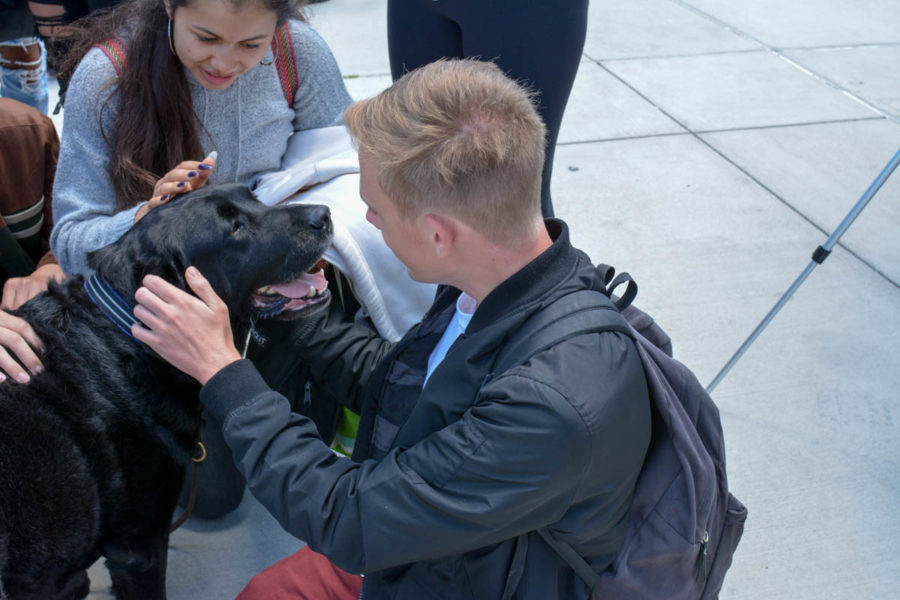Therapy Dogs: A New Addition to Campus?
Students came to the upper quad at lunch on May 28 to pet therapy dogs Irish and Swagger.
June 4, 2019
Dogs have been roaming around SJHHS campus, and might become permanent members of the campus’ staff.
There have been three dogs that have visited students on campus; Hadley a yellow Labrador, and Irish and Swagger, who are both black breeder Labradors.
Therapy dogs are trained to respond to people in their environment, under the guidance of their owner. They differ from service dogs in that they focus on a wider range of subjects, not their designated owner.
“The dogs are certified therapy dogs that have been trained/bred to give love and attention to people. The owner/handler is also highly trained to sense when the dog if the dog is uncomfortable,” says Alexandra Easton, the teacher who has been the head of this dog project. “I have had a student say they were afraid of dogs, and this student chose not to interact. I let the handler know and she kept the dog away from this student” Easton said.
Therapy dogs have been used in schools for awhile. It’s uses were notable in the cases of Sandy Hook to Virginia Tech. At Sandy Hook, both overwhelmed parents and students reported that petting dogs had reduced their stress in the aftermath. The dogs have been a great way to subdue the effect of trauma on students, but beyond that, has very helpful cognitive benefits.
“Students and staff light up as they see the dogs out and about. As soon as a student asks to pet the dogs, and other students see it is allowed, the dogs get swarmed with kids wanting to say hello,” Easton said.
Therapy dogs have shown to be a helpful mitigator of anxiety in teens. They often evoke laughter and provide a shoulder to lean on for students, which can reduce stress. In addition, the dogs are used to support children with social and emotional learning needs, which can develop into assistance with literacy development.
“We are currently exploring what is might look like if we had a therapy dog on our campus. Other schools in our District (Serra HS, Oak Grove ES, Castille ES) have had success with the dogs on campus. Increased anxiety among students, negative thoughts and other issues can be helped by visits from therapy dogs on campus. Research has shown people are willing to open up more about their feelings to a counselor when a dog is in the room” said Easton. “There are a few staff members interested in either being a puppy raiser or willing to go through the lengthy process of getting their own dog certified.”
While the dog’s presence is beneficial to students on campus, there are some logistical problems with their presence. A kid who could be severely allergic could walk into a counselor’s room per say, and have an allergic reaction solely because of the hair left behind. It would be unfair to allow dog’s onto campus that could hamper some student’s ability to safely conduct their student lives on campus.
The dog also has needs that a staff member may not be able to meet while working. For instance, if the puppy raiser was a teacher, the dog would have to be second priority to the student. Such a beneficial presence should also be taken care of, and a teacher cannot do that when they are teaching. That also opens the door to the problem of a student having an allergic reaction in class.
Hadley, Irish, and Swagger’s presence have been enjoyed thoroughly, but logistical problems may prevent that presence from being permanent.


